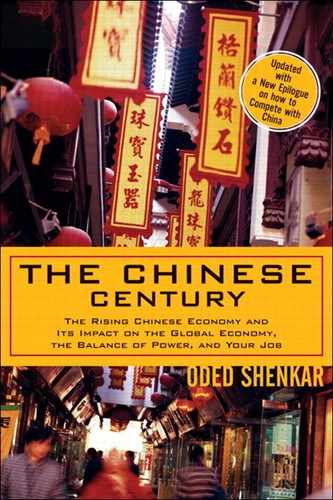| 1. | Kletzer, Lori, “Job Loss from Imports: Measuring the Costs.” Washington DC: Institute for International Economics, 2001. |
| 2. | Ashok D. Bardhan and Cynthia Kroll, “The New Wave of Outsourcing.” Fisher Center for Real Estate and Urban Economics, #1103 University of California, Berkeley, 2003. |
| 3. | “New Opponents of Free Trade,” The Wall Street Journal, 10 October 2003. |
| 4. | Ashok D. Bardhan and Cynthia Kroll, “The New Wave of Outsourcing.” Fisher Center for Real Estate and Urban Economics, #1103 University of California, Berkeley, 2003. |
| 5. | “Job Migration: Is It a Win-Win Game?” McKinsey Global Institute, McKinsey & Company, 2003. The numbers include a high portion of software and other high-tech works, so tiny Israel, for instance, is a destiny for $3 billion in offshored work. |
| 6. | Honeck, J., “International Trade and Job Loss in Ohio,” Policy Matters Ohio, February 2004. |
| 7. | Ashok D. Bardhan and Cynthia Kroll, “The New Wave of Outsourcing,” Fisher Center for Real Estate and Urban Economics, #1103 University of California, Berkeley, 2003. |
| 8. | Hilsenrath, J.E., “Behind Outsourcing Debate: Surprisingly Few Hard Numbers,” The Wall Street Journal, April 12, 2004, A1. |
| 9. | Hira, Ron, Testimony on behalf of the IEEE to the Committee on Small Business. U.S. House of Representatives, 18 June 2003. |
| 10. | “Job Migration: Is It a Win-Win Game?” McKinsey Global Institute, McKinsey & Company, 2003. |
| 11. | The Federal Reserve Bank of Chicago cites a figure of only 13 percent of the sales of China-based U.S. multinationals being shipped back to the United States; it acknowledges that contracts of such affiliates with China-owned plants are not included in the count. See Midwest manufacturing and trade with China, Chicago Fed Letter, The Federal Reserve Bank of Chicago, Essays on Issues #196, November 2003. In addition, with overall sales of China-based affiliates growing, the same percentage will yield more U.S. imports. |
| 12. | There are reasons to believe that this number is understated because of the difficulty of measuring virtual offshoring and the negative political atmosphere surrounding the practice. |
| 13. | Forrester Research; “Job Migration: Is It a Win-Win Game?” McKinsey Global Institute, McKinsey & Company, 2003. |
| 14. | Scott, Robert E., “Fast Track to Lost Jobs.” The Economic Policy Institute. October 2001. |
| 15. | Kletzer, Lori, “Job Loss from Imports: Measuring the Costs.” Washington DC: Institute for International Economics. See also “Trade Balance: Tipping Scales to Add Workers.” The Wall Street Journal, 30 August 2001: A1. |
| 16. | “Job Migration: Is It a Win-Win Game?” McKinsey Global Institute, McKinsey & Company, 2003. |
| 17. | OECD, 1999 Employment Report, chapter 2. |
| 18. | Bulkeley, Willliam M., “IBM Documents Give Rare Look at 'Offshoring,'” The Wall Street Journal, 19 January 2004: A1. |
| 19. | Budman, Matthew, “Looking Ahead to Our Place in the Next Economy,” Across the Board, 16. |
| 20. | Colvin, Jeffrey, “Value Driven,” Fortune. 27 October 2003. Jon E. Hilsenrath and Rebecca Buckman, “Factory Employment Is Falling Worldwide,” The Wall Street Journal, 20 October 2003: A2. |
| 21. | Groshen, Erica L. and Potter, Simon, “Has Structural Change Contributed to a Jobless Recovery?” Current Issues in Economics and Finance, vol. 9 no. 8 (2004). See also Federal Reserve Bank of New York, August 2003. Interview with Erica Groshen in January, 2004. |
| 22. | “U.S. Job Losses 'Not China's Fault,'” The Standard (Hong Kong), 6 December 2003: A4. |
| 23. | “U.S. Blames Job Loss on China,” CNN.com, 8 January 2004. |
| 24. | Bjorhus, Jennifer, “The Tradeoff of Trade with China: Jobs,” Twin Cities.com, Pioneer Press, 27 April 2003. |
| 25. | “Where Free Trade Hurts,” Business Week, 15 December, 2003. |
| 26. | Kletzer, Lori, and Litan, Robert, “A Prescription to Relieve Workers' Anxiety,” Policy Brief 01-2, IIE, February 2001. |
| 27. | Denlinger, Paul, China Business Strategy, 4 September 2003. |
| 28. | “Offshore, Onshore,” The Wall Street Journal, February 26, 2004: B4. |
| 29. | Fisher, A., “Where the Jobs Are Now and How to Get Them,” Fortune.com, March 16, 2004. |
| 30. | Gongloff, M., “Is the Job Market Broken?” CNNmoney, February 9, 2004. |
